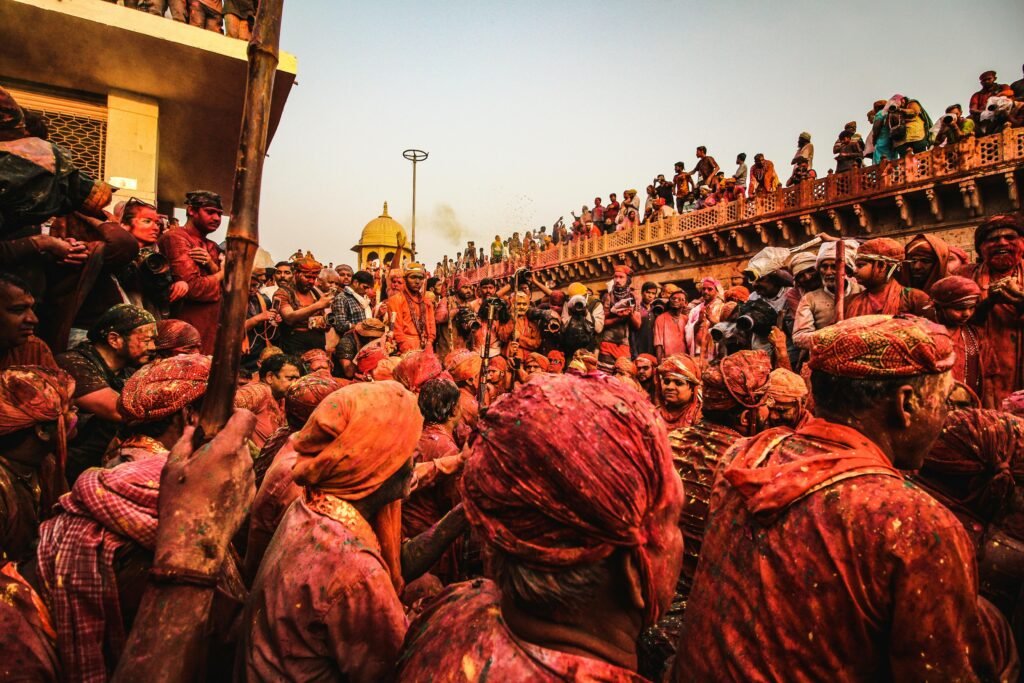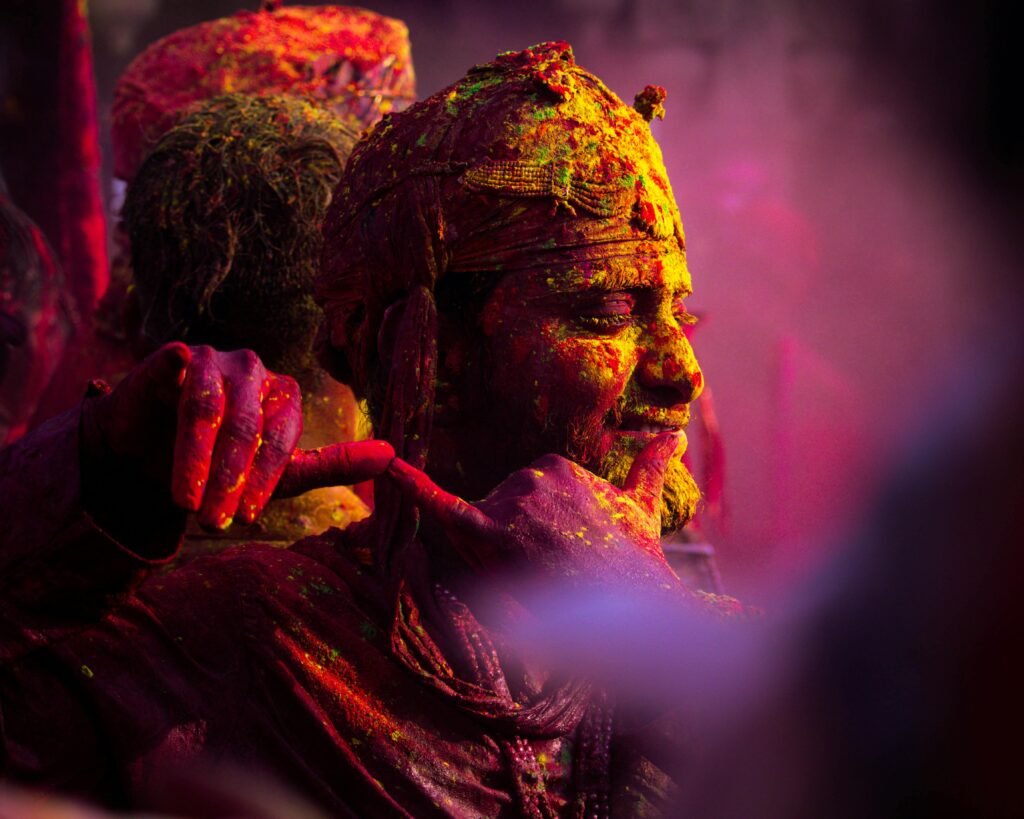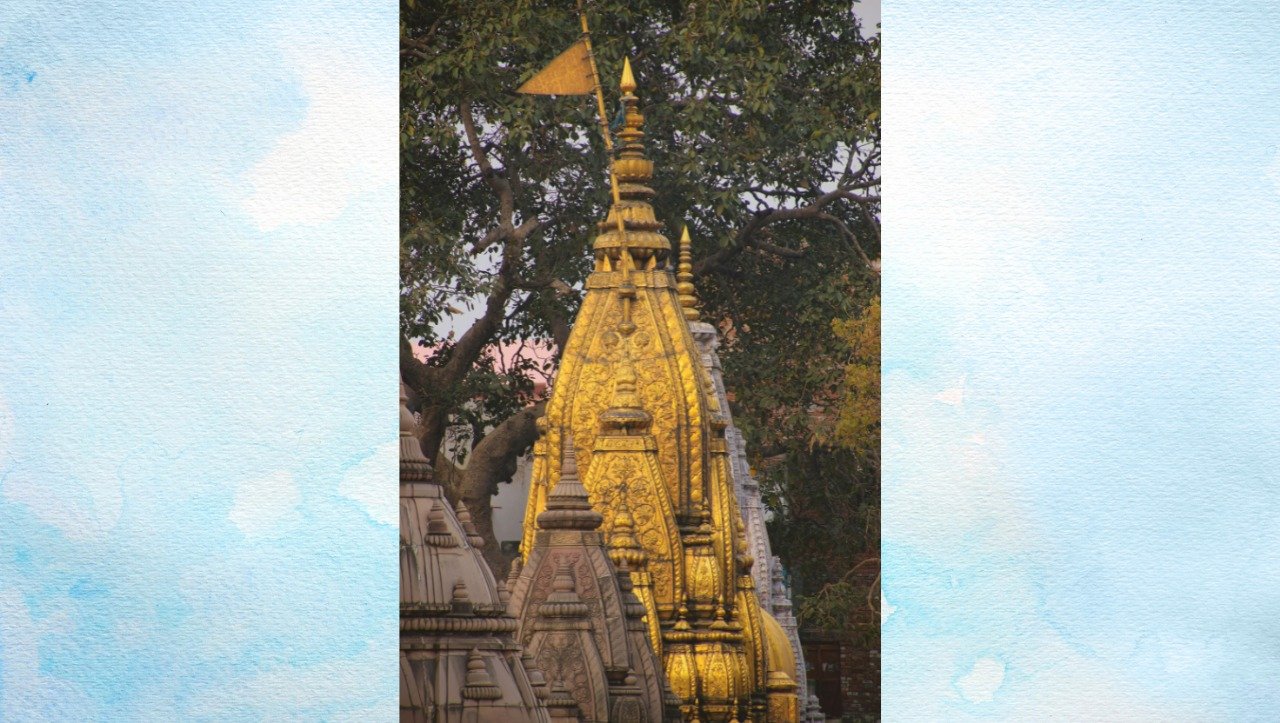
Introduction: The Wonders of Kashi Vishwanath Temple
If you are even a little familiar with Hinduism, you must have heard about Kashi Vishwanath Temple. This temple is not just a building; it is the heartbeat of Varanasi, one of the world’s oldest cities. Dedicated to Lord Shiva, Kashi Vishwanath is counted among the 12 Jyotirlingas, the most sacred shrines of Shiva in India.
People say Kashi is not an ordinary place; it’s where Shiva himself whispers the Taraka Mantra to grant moksha (liberation) to the soul. That’s why saints, yogis, and even kings have visited this temple for centuries. The river Ganga flows nearby, adding even more spiritual power to this holy land. Ancient texts like the Skanda Purana declare, “Even the gods long to be born in Kashi.”
You may know Kashi Vishwanath as a famous pilgrimage spot. But did you know this temple hides some unbelievable secrets? From tantric gateways to the mysterious Shree Yantra on its dome, the temple is full of wonders. These facts are not shared in every travel guide!
Through this post, you will discover 11 surprising truths about Kashi Vishwanath Temple. Some of them are backed by old scriptures. Some are whispered as ancient legends in the narrow lanes of Varanasi. Either way, they will make you see this temple in a new light.
Ready? Let’s begin this spiritual journey to Kashi together!
Har Har Mahadev!
1. The Jyotirlinga of Kashi is Divided in Two Sacred Forms
You may not know this, but the Kashi Vishwanath Temple holds a very rare secret inside its sanctum. Here, Lord Shiva is worshipped in his left-sided form, known as Vam Roop. This Vam form is considered gentle, beautiful, and full of compassion. But that’s not all! On the right side, seated with him, is Goddess Bhagwati, representing Shakti, the divine energy.
You will not find this unique combination in any other Jyotirlinga temple in India. Normally, you see only Lord Shiva alone. But at Kashi Vishwanath Temple, Shiva and Shakti sit together, completing the circle of cosmic energy. This is why people say that Varanasi is not just a city; it is liberation itself.
There’s a beautiful belief connected to this. Because Shakti sits on the right, the path to Moksha (liberation) is said to be open only here. Shiva blesses the soul directly, and the soul no longer needs to take birth again.
This sacred union of Shiva and Shakti makes Kashi Vishwanath more than just a temple. It is the living symbol of harmony between power and Peace.
Let your faith grow stronger with this divine knowledge.
2. Kashi is the Gateway to Moksha (Liberation)
If you ask any saint why people visit Kashi Vishwanath Temple, the answer is simple — moksha. Kashi is not just a city; it is known as the city of liberation. Scriptures like the Kashi Khanda of the Skanda Purana say that even death is not scary here. In Kashi, death is seen as a blessing because the soul is freed from the endless cycle of rebirth.
There’s a beautiful reason behind this belief. At the Kashi Vishwanath Temple, Goddess Bhagwati sits on the right side of Shiva. This symbolizes the opening of the path to salvation. When you come here with a pure heart, it is believed that Shiva himself whispers the Taraka Mantra in your ear during your final moments. This sacred mantra helps the soul cross the ocean of life and reach liberation.
You may have heard elders say, “No one who dies in Kashi is ever born again.” That’s why people from across the world come here in their last days.
So, if you ever visit Kashi Vishwanath Temple, remember you are stepping into a place where liberation is assured.
Moksha is not far when you are in Kashi.
3. During Rituals, Deities Face West — A Rare Tradition
If you visit any Hindu temple, you will notice something common. Most idols face east, towards the rising sun. But at the Kashi Vishwanath Temple, things are different. Here, during rituals, the deities face west. This might sound unusual, but there’s a deep meaning behind it.
Facing west symbolizes moving beyond the worldly cycles of life and death. It represents leaving behind attachments and heading towards moksha. In Hindu belief, the west is linked with the setting sun, the end of the journey, and freedom from rebirth.
According to legends, Lord Shiva in Kashi Vishwanath Temple faces west to guide his devotees beyond the ordinary world. He shows them the path to the ultimate truth. That’s why this temple is considered so special in the spiritual world.
Even saints say, “When Shiva faces west, he faces the truth of liberation.” That’s why thousands of people visit here with deep faith in their hearts.
So next time you visit Kashi Vishwanath Temple, remember you’re standing before a Lord who shows the way to freedom.
May you also find your path to liberation.
4. The Sacred Shree Yantra Above the Sanctum
Have you ever noticed the golden dome of the Kashi Vishwanath Temple? It hides a secret not many people know. Right above the sanctum sanctorum (garbhagriha), there is a Shree Yantra installed. This is not just any decoration; it is a powerful tantric symbol.
The Shree Yantra is considered the seat of Goddess Tripura Sundari, the ultimate form of energy and prosperity. In Tantra, this symbol holds the power of the universe itself. It represents both material success and spiritual liberation. This is why Kashi Vishwanath is not just a temple — it’s a place of divine energy and siddhi.
According to traditions, temples with a Shree Yantra attract cosmic energy. It is said that yogis and sadhaks visit Kashi Vishwanath Temple for this very reason. They believe it helps them in achieving spiritual perfection (siddhi).
Even today, many devotees silently offer prayers to this hidden Shree Yantra for peace, prosperity, and spiritual growth.
So, when you look up at the golden dome of Kashi Vishwanath next time, remember — you are under the blessings of Shakti herself.
May the Yantra guide your soul.
5. The Four Mystical Tantric Gates of Kashi Vishwanath
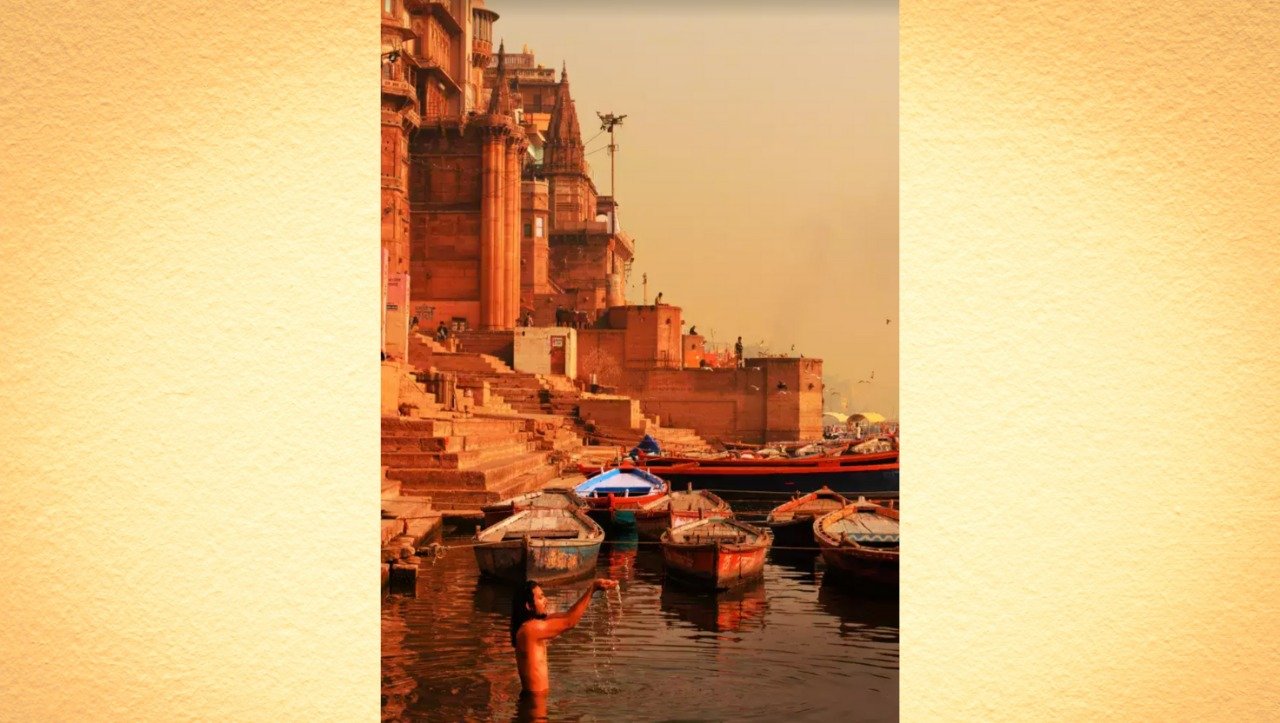
The Kashi Vishwanath Temple is not just famous for its Jyotirlinga. It also holds deep tantric secrets. One of these is the presence of four mystical gates. These are not ordinary entrances. They are known as the Shanti Dwar, Kala Dwar, Pratishtha Dwar, and Nivritti Dwar.
Each gate carries a deep spiritual meaning. Shanti Dwar is the Gate of Peace, calming the restless mind. Kala Dwar is called the Gate of Arts, linked with creativity and divine knowledge. Pratishtha Dwar means the Gate of Prestige, representing success, fame, and stability in life. Finally, Nivritti Dwar is the Gate of Liberation, leading you towards moksha and freedom from the cycle of rebirth.
These four tantric gates make the Kashi Vishwanath Temple unique in the world. You won’t find this spiritual design in any other temple. Many tantric practitioners believe these gates help balance the energies of those who walk through them.
According to ancient belief, walking through these gates with faith can change your life’s direction.
So, when you visit Kashi Vishwanath Temple, don’t forget to notice these mystical doorways of divine energy.
6. Jyotirlinga in Ishan Kon (Northeast) — Seat of Knowledge
The Kashi Vishwanath Temple is full of secrets that even many devotees don’t know. One such fact is about its placement. The Jyotirlinga here is placed in the Ishan Kon, or northeast corner. This direction is very important in Hindu traditions. People believe it to be the direction of knowledge, wisdom, and divine blessings.
In ancient texts, Lord Shiva is known as Ishan, the ruler of the northeast. This placement shows Shiva’s connection with supreme knowledge and spiritual mastery. That’s why many saints believe that visiting Kashi Vishwanath Temple helps you unlock your inner wisdom.
The northeast corner also connects to the 10 Mahavidyas of Tantra. These goddesses represent different forms of cosmic power and knowledge. Together, they make Kashi a center for those seeking both material and spiritual success.
It’s no surprise that sages and seekers have come here for centuries. They believe the energy of the Ishan Kon sharpens the mind and opens the path to moksha.
So, when you stand before the Jyotirlinga at Kashi Vishwanath Temple, know that you are standing at the seat of knowledge itself.
7. Temple Architecture Aligned with Aghor Tradition
When you approach the Kashi Vishwanath Temple, you’ll notice something special about its architecture. The main entrance faces south, while the deity looks north—towards the direction of Aghor. This alignment is deeply symbolic in Hindu tradition.
The Aghor tradition represents the fierce, transformative power of Lord Shiva. Devotees believe that entering through the south gate offers them an Aghor Darshan—a sacred glimpse of Shiva’s powerful form. This darshan instantly purifies all their past sins.
Legend has it that saints and common people alike have felt their burdens lifted right at the temple’s entrance. The south-facing door allows the fierce energy of Shiva to cleanse the soul. This is why many devotees say, “Just entering Kashi Vishwanath is like washing away a lifetime of mistakes.”
This architectural choice is unique to Kashi Vishwanath and adds to the temple’s reputation as a place of spiritual renewal. So, when you visit, know that every step you take is blessed with Aghor energy that clears your path.
8. Geographical Mystery: Vishwanath on the Trident (Trishul)
Kashi Vishwanath Temple stands in a unique geographical spot. It sits between two ancient rivers—the Mandakini (Maidagin) and the Godavari (Godowlia). These rivers form a natural shape like a trident (trishul), which is the weapon of Lord Shiva himself.
This trident shape is more than just a coincidence. It symbolizes the eternal power of Shiva protecting Kashi. Because of this divine protection, many believe that Kashi can never face destruction or apocalypse.
People consider it an eternal city where the cycle of birth and death finally ends.
In Hindu mythology, it is said that as long as the trident guards Kashi, the city will remain a spiritual beacon for the world. No matter what happens in the cosmos, Kashi Vishwanath Temple and its surroundings will remain untouched.
This natural blessing adds to Kashi’s mystique. When you visit, you’re not just in any city—you’re standing in a place guarded by the trishul of Lord Shiva, safe from time and destruction.
9. Shiva as Guru by Day, King by Night
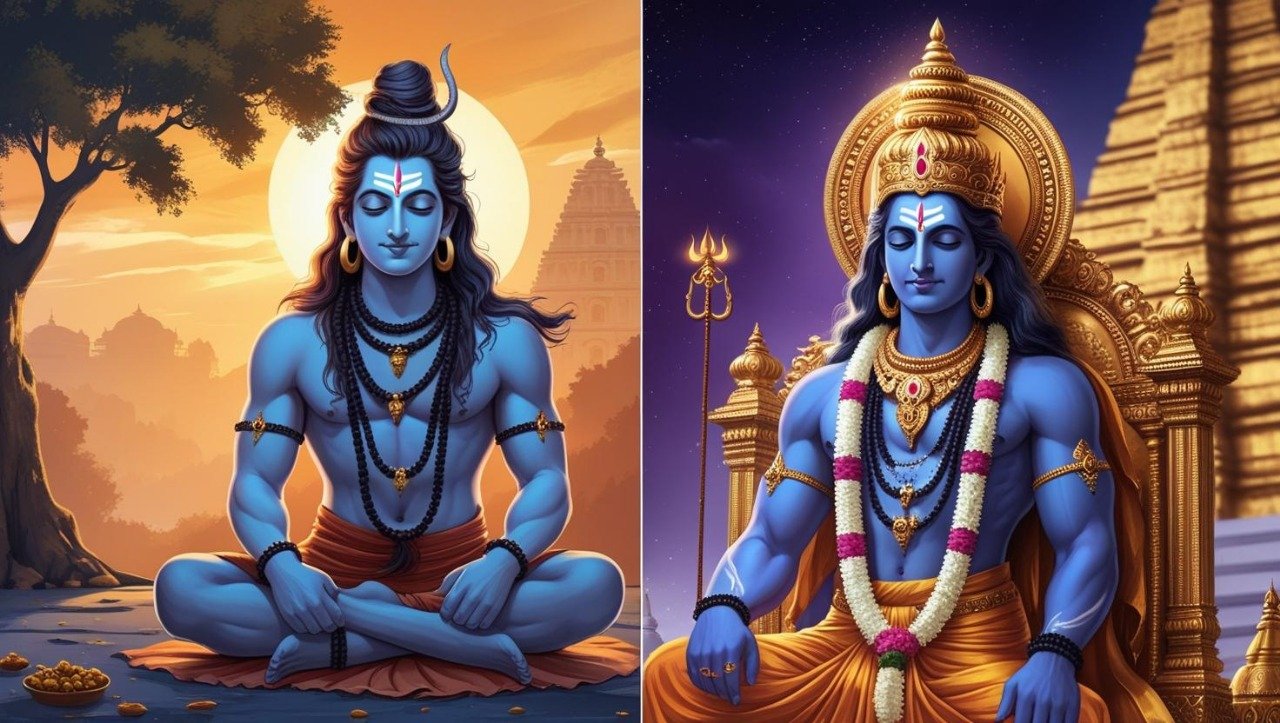
At the Kashi Vishwanath Temple, Lord Shiva plays two special roles every day. During the daytime, Shiva is seen as the Guru—the divine teacher. Devotees believe that Shiva wanders the sacred city of Kashi, guiding seekers and sharing spiritual wisdom. Many say that the entire city becomes a classroom where Shiva teaches the secrets of life.
But as the sun sets, a magical transformation happens. During the famous Shringar Aarti at night, Shiva appears in his royal form called Rajarajeshwar—the King of Kings. Dressed in magnificent robes and jewels, he blesses the devotees as a powerful monarch. This dual identity symbolizes Shiva’s vast nature—both the humble teacher and the supreme ruler.
It’s said that no other place in the world shows such a beautiful balance between humility and majesty. Visiting Kashi Vishwanath Temple allows you to witness both sides of Lord Shiva’s greatness.
So when you visit, imagine Shiva walking the streets as your Guru by day and blessing you as a mighty king by night. This special rhythm adds a unique charm to the temple and makes every visit memorable.
10. Divine Pact Between Baba Vishwanath and Goddess Annapurna
One beautiful secret of the Kashi Vishwanath Temple is the divine bond between Baba Vishwanath (Lord Shiva) and Goddess Annapurna. Annapurna, the goddess of nourishment, lovingly feeds every devotee in Kashi. She ensures that no one here ever goes hungry—body and soul are both cared for.
On the other hand, Baba Vishwanath promises liberation. It is said that after death, he blesses the soul with the Taraka mantra, guiding it to moksha. This powerful pact keeps the spiritual energy of Kashi alive and thriving.
Together, they represent the perfect balance of material and spiritual well-being. Devotees feel safe knowing that Kashi nourishes their bodies and frees their souls. This is why so many pilgrims visit to receive their blessings.
A famous story tells how Annapurna’s food is never-ending here, symbolizing the endless grace of the divine. Meanwhile, Baba Vishwanath’s promise of liberation makes Kashi a place unlike any other.
So when you visit the Kashi Vishwanath Temple, remember that this divine duo blesses you with both abundance and freedom.
11. Aghor Darshan Cleanses Lifetimes of Sins
One of the most powerful experiences at Kashi Vishwanath Temple is the Aghor Darshan. This fierce form of Lord Shiva is believed to cleanse not just your current life’s sins but those of many past lifetimes too.
During Maha Shivratri, the temple comes alive with energy. Devotees witness the divine procession of Shiva’s Aghor form. It’s said that this procession is so powerful that even spirits, animals, gods, and other beings join in. They all gather to celebrate and receive Shiva’s blessings.
This unique belief shows how Kashi Vishwanath Temple transcends the ordinary. It connects the physical, spiritual, and cosmic worlds in one sacred space. By witnessing or experiencing the Aghor Darshan, devotees feel a deep sense of purification and renewal.
Many say that just seeing Shiva’s Aghor form removes heavy burdens from the soul. This is why pilgrims return year after year, seeking this divine cleansing.
So, when you visit Kashi during Maha Shivratri, open your heart and soul. You may witness a cosmic celebration like no other.
Conclusion: The Eternal Power of Kashi Vishwanath

There is a famous belief among devotees that every step you take towards Kashi Vishwanath Temple is as sacred as performing an Ashwamedha Yagna, one of the greatest Vedic sacrifices. This means just walking to Kashi brings immense spiritual merit or punya.
Kashi is not just a city or a temple; it is the heart of Hindu spirituality and liberation. The divine presence of Lord Shiva and Goddess Bhagwati here creates a powerful energy that cleanses the soul and grants moksha.
Throughout this blog, you discovered many hidden truths about the Kashi Vishwanath Temple—from tantric gates to the sacred Shree Yantra, and the cosmic geography that protects it. Each fact adds to the magic and mystery of this eternal city.
Visiting Kashi is like stepping into a timeless spiritual ocean where the soul can finally find peace and freedom. So, whether you are a pilgrim or a seeker, know that your journey to Kashi is blessed beyond measure.For a deeper spiritual experience and exclusive guides on Kashi Vishwanath Temple, don’t forget to download the Divyakripa App—your perfect companion on this divine journey.
Har Har Mahadev! May the eternal power of Kashi Vishwanath guide and bless you always.

